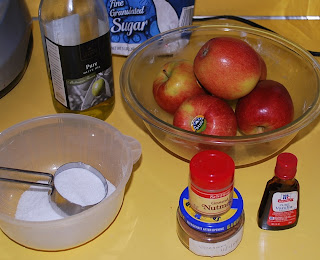The order from
Raintree Nursery came on Tuesday. Fortunately, the past 2 days have been cool, and I stored them North of the house where it is cooler. Today is Thursday, I unpacked and planted them. As it happens, today is warm and sunny, a beautiful day.

These are the trees. I'm a big fan of Raintree, and most of trees they have sent me have been robust and beautiful, and they have all grown rapidly. This time I do feel some disappointment. The middle tree, a minidwarf Honeycrisp apple, has about 3 roots, about 6 inches long each. Not much more than a partly rooted cutting. If I saw it in the store, I would have either passed on it, or paid half price or less. The tree on the left, a minidwarf Karmijn de Sonneville, is better rooted, I would call it a good specimen. The tree on the right is an Illinois Everbearing Mulberry, and is a handsome specimen with lots of thick, strong looking roots. Even the scrawny Honeycrisp Apple should grow, I hope, and I'll give it a try.
I look at buying fruit trees as: obtaining the genetic potential, in a 'package' that is healthy enough for me to grow. I hope they are large enough to produce in a few years, assuming that they respond well to my growth conditions. Most are grafted, again combining the genetic potential of the rootstock, with that of the scion. I also hope they are disease-free and healthy, without injuries. These trees are uninjured, and they were well packed.
 Raintree nurseries describes Honeycrisp
Raintree nurseries describes Honeycrisp as: "outstanding crisp texture...sweet and tart flavors...pick it in September, but it develops its full aromatic flavor if left on the tree until mid October...somewhat scab resistant and has not shown problems with fireblight." (Photo from Raintree)

Karmijn de Sonneville is
described by Raintree as: intensely flavored red russetted apple from Holland...highest in both sugars and acids...triploid cross of Cox's Orange Pippin and Jonathan...so highly flavored and aromatic that it overwhelms some tastes when just off the tree. (Photo from Raintree)

Raintree describes
Illinois Everbearing Mulberry as "sometimes starts producing the first year...bears an abundance of sweet, highly flavored fruit, 1-1/2 inches long x 1/2 inch wide...berries ripen continuously throughout July, August, and September, hence its name....self-fertile (photo from Raintree).
CFRG discusses mulberries, stating "M. alba X M. rubra...1958. Black, nearly seedless fruit large...very long, averaging 12 per ounce. Flavor good to very good, very sweet, considered best by by many. Matures over a long season. Tree vigorous and somewhat dwarfed, extremely hardy and productive."

This is the same variety, picture from
Starks Brothers Nursery.
Plant expert
Arthur Jacobson states: "few fruit trees in fact are so easily neglected without crop loss...mulberries fall when ripe, and with a splat notify the world that if they be not eaten fresh, forget it. Marketing mulberries is therefore difficult... Many people... cannot bide the thought of stains --mulberry juice is dark and persistent to an infamous degree...plant your 'Illinois Everbearing' tree well away from paving, patios or walks. Then, beginning the very first year, you can enjoy its fruit all summer"

For some reason, water that is set out for cats, chickens, or being used to soak trees is much tastier than water that is poured from the same faucet for dogs. No problem. I soaked the trees several hours before planting.

Choosing the spot for the mulberry. This is the spot where cucumbers grew last year on their tower. This year cucumbers will be in the front yard. I like to stand back and walk around and view from different angles before planting.

Planted, watered in, and pruned back to about 2.5 feet. This tree will be grown by the Backyard Orchard Culture method, with intense summer pruning. Most of my trees were cut back at the same height, and it's working well.
I have not seen mulberries grown by this method, but I don't see any reason not to try. It will be easy to cover with netting to keep the birds off - and birds are a reason that some people quit growing this fruit.
I will try to grow the pruned portion as well, as a cutting. If it grows, it may make a nice gift. CFRG states: "No special pruning techniques are needed after the branches have been trained to a sturdy framework...can be kept to a tidy form by developing a set of main branches, and then pruning laterals to 6 leaves in July in order to develop spurs near the main branches..not advisable to prune the trees heavily since the plant is inclined to bleed at the cuts. Cuts of more than two inches in diameter generally do not heal and should be avoided at all cost. The bleeding will be less severe if the tree is pruned while it is dormant." Mulberries are related to figs, and I suspect that similar issues apply.

Karmijn, planted and watered in. The hole was dug and prepared a while back, so this was an easy task.
Same for Honeycrisp.
 This is the annual "try to get the dogs to cooperate for a photo under the white cherry tree" photo. I love this tree, old and gnarled, producing a profusion of double white flowers for a week. The orchard mason bees buzz around the flowers during the afternoon.
This is the annual "try to get the dogs to cooperate for a photo under the white cherry tree" photo. I love this tree, old and gnarled, producing a profusion of double white flowers for a week. The orchard mason bees buzz around the flowers during the afternoon.




































